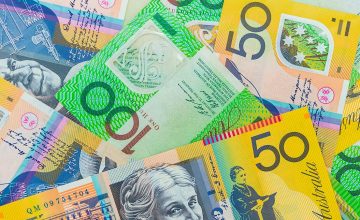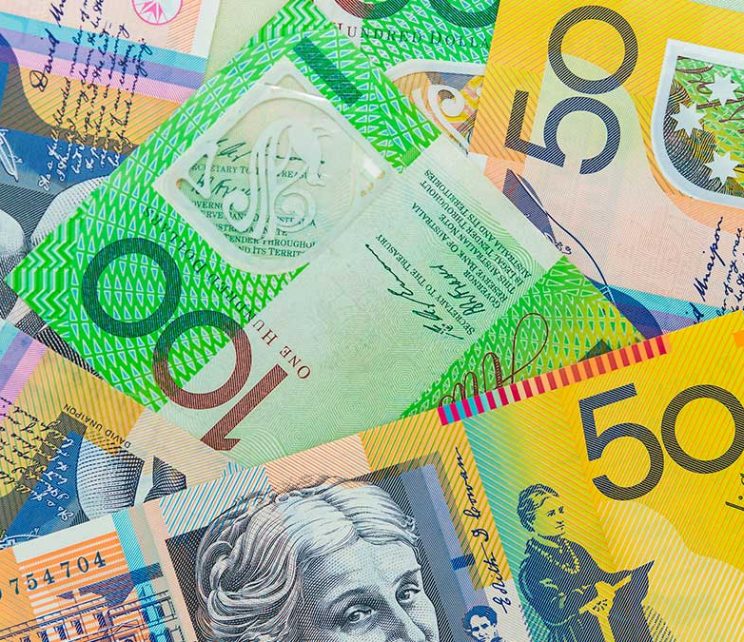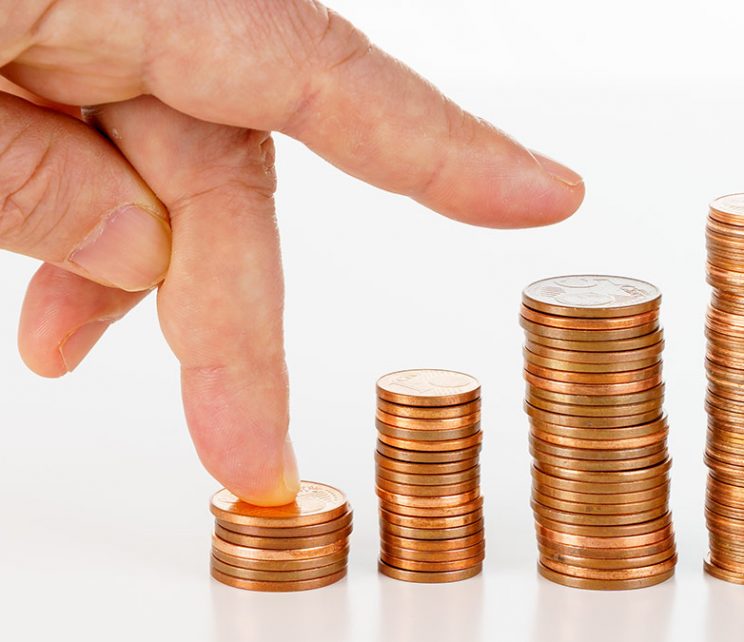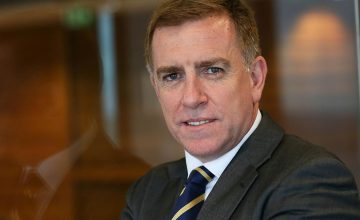
Mainstream Online Web Portal
LoginInvestors can view their accounts online via a secure web portal. After registering, you can access your account balances, periodical statements, tax statements, transaction histories and distribution statements / details.
Advisers will also have access to view their clients’ accounts online via the secure web portal.
The Point
Quick, actionable insights for investors
Income and Fixed Interest

What the Reserve Bank’s 0.5% rate rise means for investors
After this week’s higher-than-expected rate rise, will we see a cash rate close to 3% by the end of 2022?
“The cash rate has been held too low for too long and the RBA is behind the curve,” says Pendal’s head of cash strategies Steve Campbell.
“They are moving more quickly to get closer to neutral. I view 50 basis points next month as more probable than 25.”
Are markets right about a cash rate closer to 3% by year’s end? “Market pricing is aggressive, but at the moment I wouldn’t rule anything out,” Steve says.
Markets are looking for another 3% of rate hikes in the next 12 months — but is the economy ready?
“The RBA tried to imply the economy would be resilient. But the tide is now going out.
“The first 1.5% of hikes will see belt-tightening, but probably no more. However the next 1.5% could see actual stress, especially in housing.
“This is an experiment the RBA hasn’t undertaken for more than a decade — and risks of a policy error are rising.”

Michael Blayney: Three investing rules for turbulent times
Quick view
Michael Blayney: Three investing rules for turbulent times
Emotion can overwhelm strategy when markets are volatile. Pendal’s multi-asset chief Michael Blayney has three simple rules to remember in times like these:
- Don’t Panic: A well thought-out and documented philosophy and process is crucial to any active decision making during volatility. This helps you stay disciplined despite the noise. It’s easy to get swayed by emotion, or worse still, enter a crisis at a risk level that wasn’t right for you to begin with.
- Look for opportunities, but at least rebalance: Disciplined rebalancing adds to returns and reduces risk over time, compared to letting a portfolio run.
- Diversification Matters: Diversified investors know there’s always going to be some part of their portfolio that’s not working as well as others. Then the cycle turns and they need that part of the portfolio. That cycle can take a decade so an investor must be able to cope emotionally with an underperforming asset for a period. Always include enough liquidity (cash) for your short-term needs. You never want to be a forced seller.

What this week’s rate rise means for cash investors
Quick view
What this week’s rate rise means for cash investors
The cash rate now looks like it will be closer to 1.75% by the end of 2022 after this week’s jump to 0.35%.
“It’s better times ahead for cash investors, though the speed of the move has not been without some pain,” says our head of cash strategies Steve Campbell.
Six-month yields are now likely to sit closer to 1.65%, up from 1.48%, says Steve.
“Those sitting in term deposits may enjoy having their deposits valued at par — but they are accruing at a much lower rate than other opportunities in the market.”
Investors should be wary of short-dated TDs.
“First and foremost cash should be there to provide liquidity while preserving capital. TDs are great at preserving capital. But liquidity? It’s almost quicker to sell a house than wait for TDs to mature.
“I expect we’ll see more volatility, even by cash fund standards in the coming months.
“Short-dated, highly liquid assets will quickly reflect the changes that the RBA will deliver in the coming months. It’s why I think our Pendal Stable Cash Plus Fund is well placed in this environment.”

Could higher rates work against lower inflation? And what would that mean for bonds?
Quick view
Could higher rates work against lower inflation? And what would that mean for bonds?
Ongoing demand is blunting the impact of higher rates, argues Oliver Ge, an assistant PM with Pendal’s income and fixed interest team.
“When households are in decent shape, as they are today – when you have wages growth at decade highs, unemployment near record lows, and savings plentiful – you end up with an environment where people are much less sensitive to price changes,” he says.
“As a central banker you see inflation rising and your natural instinct is to raise rates. But the usual transmission mechanism is broken.”
Higher interest rates will eventually impact, but they’re not working just now, argues Oliver.
He believes there could be a breaking point mid-next year, leading to a reversal from the RBA.
That could make bonds even better value than they are today, he says.

Oliver Ge: Fears of a ’70s inflation re-run are overblown
Quick view
Oliver Ge: Fears of a ’70s inflation re-run are overblown
US inflation numbers were higher than expected in August, prompting more headlines about a second wave of inflation and further interest rate rises.
Can investors really expect a 1970s inflation re-run?
“There’s a lot of commentary on a possible ’70s-style, second wave of inflation,” says Oliver Ge, a portfolio manager with Pendal’s income and fixed interest team.
“But I don’t believe we’re going down that path. We’re not even close to a rerun of the 70s.”
Higher US inflation in August is just one uptick after 13 consecutive months of disinflation – and inflammatory news headlines are unwarranted, Oliver argues.
“The difference is that back then, the US was highly oil-dependent, and it also was experiencing a massive devaluation of its currency. Put the two together and it triggered a big wave of inflation.
“The US is no longer energy-dependent – in fact it is an exporter of oil. Unionisation is no longer widespread. There’s none of the original catalysts that prompted the blowout.”

Recession risk is still out there. Here’s why
Quick view
Recession risk is still out there. Here’s why
The risk of recession appears to be side-lined for now, but investors may be overlooking one factor, argues Pendal’s Oliver Ge.
Much of discussion about higher interest rates has been focused on the impact of bigger mortgage repayments for homeowners.
But tighter credit conditions and stricter collateral requirements for business are likely to have a more significant impact, says Oliver, an assistant PM with our fixed interest team.
“Higher interest payments are a strain for businesses, but it’s when you lose access to credit that the stress comes through.”
There is evidence of tighter lending standards in the US which will likely flow through to defaults in six-to-nine months, he says.
“The prospect of recession has for the moment been sidelined, but the risk is still very much there.”

Inverted yield curve: what it means (and it’s not what you think)
Longer-dated bonds usually pay higher interest rates to compensate for the increased risk over time.
But right now short-term interest rates are moving closer to — and even higher than — long-term rates.
This “yield curve inversion” is a very important signal since it usually means a recession is imminent.
But that’s not the case this time, argues Oliver Ge, an assistant portfolio manager with our Income and Fixed Interest team.
With a strong global economy, low unemployment and benign equity market conditions, analysts have been looking for an alternative explanation for the inversion.
The inversion may be explained by expectations that current inflationary pressures are only short term, says Oliver.
“Short-dated bond yields are higher because they carry a premium to their longer-dated counterparts to compensate investors for bearing higher near-term inflation risk.
“That’s what’s driving the inversion.”

Why bonds are worth considering even as rates rise
Quick view
Why bonds are worth considering even as rates rise
Most investors understand that when rates go up, bonds go down.
But what if bonds had the potential to provide an investment return during central interest rate hiking cycles?
It’s possible says Oliver Ge, a portfolio manager with Pendal’s Income and Fixed Interest team.
“The key is that it depends on how much is priced into the bond market at the point central banks start lifting rates.
“Looking at history, an investor who buys bonds at the moment of the first rate hike in a cycle and sells at the last rate hike actually gets quite a substantial return.”
Since the 90s there have four rate hiking cycles in Australia, each averaging an increase of 2.25 per cent to the RBA’s policy rate Oliver says. The annualised bond return over the same period was more than 4 per cent.
“The compelling story is don’t ignore bonds when rates are rising — they can still give you mid-single digit returns. That’s quite significant in a market where equities are negative.”

Look to government bonds instead of term deposits
Quick view
Look to government bonds instead of term deposits
Ultra-loose monetary policy is creating exceptions to risk and reward – and bringing opportunities for better returns, says Pendal’s Oliver Ge.
Investors who choose the safety of a government bond held to maturity are now offered better returns than a nominally higher-risk bank term deposit.
“The big banks are offering about 0.25 per cent on a one-year term deposit — $25 on a $10,000 investment.
“A one-year Australian government bond is paying 1 per cent — four times as much money.” State government bonds offer more — as high as 1.6 per cent for West Australian semi-government bonds.
The anomaly exists because the RBA is providing very cheap funding to the banks, meaning they can keep deposit rates artificially low without affecting the financing of their lending businesses.
By contrast, government bonds are issued into a competitive global market and rates are set by investor demand.
It’s likely to stay this way as long as banks have access to cheap funding.
“This is a genuine opportunity to get a lot more juice with the same or better safety – assuming you hold to maturity.”

China isn’t likely to invade Taiwan any time soon. Here’s why
Quick view
China isn’t likely to invade Taiwan any time soon. Here’s why
It’s understandable that investors pondering their exposure to Russia’s invasion of Ukraine might also think harder about the China-Taiwan stand-off.
But a Chinese invasion of Taiwan is a very low probability event in the short or medium term, says Pendal’s Oliver Ge.
“Near term the Chinese Communist Party has other priorities at stake. President Xi has promised to rectify growing domestic discontent over diminished living standards. Housing affordability and employment opportunities are key focal points for the CCP leadership.
“In the medium term, Taiwan’s support from the US remains crucial. Remember that Taiwan (but unfortunately not Ukraine) is of great strategic importance to Washington. China has no appetite for a direct confrontation with the US.
“These points don’t negate the possibility of a conflict in the longer term. A unified China is arguably the biggest political objective of the CCP.
“But for now the carrot of economic cooperation remains the preferred policy over brute force.”

Tim Hext: Australia’s in a surprisingly good position to weather the global storm
Play podcastTim Hext: Australia’s in a surprisingly good position to weather the global storm
Investors could not be blamed for feeling a bit queasy at Donald Trump’s whipsaw approach to tariffs.
“The tariff threat does add to this argument that inflation isn’t about to come down anytime soon,” says Pendal’s head of bonds strategies Tim Hext in our latest Fast Podcast.
“The market is right to be a little bit concerned. Obviously free trade – or some version of free trade generally benefits both parties.
“The law of comparative advantage says you end up focusing on what you are a cheap producer of. If you start to throw sand into the gears of free trade that’s not a good thing.
“Ultimately, I think it is bad for growth and will mean slightly higher inflation, but not enough to suddenly cause rate hikes in the near future.”
“It creates a lot of short-term noise, but fortunately investors with a medium-to-long-term time-frame can leave it to people like me to worry about that.”
Tim says investors should hold course for now.
Loading posts...
Loading posts...















